What is Ammunition box

To transport and store ammunition of various calibers, ammo boxes are designed. Most of them are steel and have a rubber gasket around the lid to shield the contents from air and moisture. Although these boxes were made with ammunition in mind, their adaptability makes them perfect for everything you can think of.
Due to its construction for military usage, steel ammunition boxes have several advantages. They are also water and air-tight since the rubber gasket forms a seal when latched down, which is perfect if you want to keep anything dry and secure.
An ammunition can’s greatest vulnerability is rust, but if you maintain the steel covered with a rust-inhibiting paint, you may use these containers for a very long period.
The History of Ammunition Box
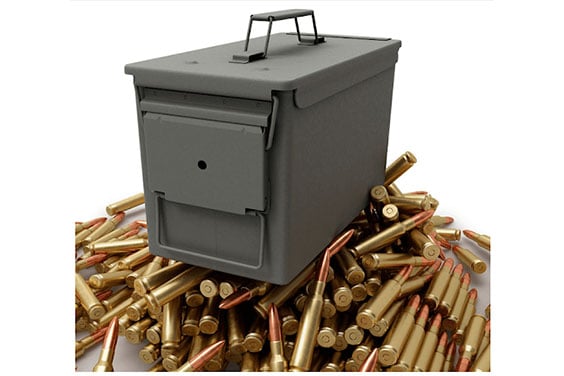
Small arms ammunition, sometimes known as cartridges, is used in many weapons, including pistols, rifles, shotguns, and larger automatic weapons, often known as machine guns. Despite solely referring to the projectile, the term “bullet” is frequently used to describe the cartridge. The cartridge’s constituent parts are referred to properly as the bullet, case, primer, and fuel or gunpowder.
After being produced individually, each component is combined to create the cartridge. The bulk of military and civilian ammunition has been standardized in size, shape, ignition type, and ballistic performance; nonetheless, there are still numerous “wildcat” cartridges that are out-of-date and unique. Cartridges for small guns ammunition have bullets up to 0.75 inches in diameter (or caliber) (.750 caliber). The majority of the output is focused on.45 caliber or smaller cartridges.
Before the 19th century, the only way to load a gun was to pour the powder into the barrel first, then wrap a lead bullet in a greased fabric patch and drive it with a ramrod into the powder. A percussion cap or a flintlock generated a tiny spark or explosive flash to ignite the powder that shot the patched bullet. This technique was extremely slow and frequently resulted in an imprecise shot.
Following several shots, the barrel accumulated powder residue to the point that loading was complex.
Early in the nineteenth century, gun makers understood that the only way to improve accuracy and rate of fire was to modify how the bullet, powder, and igniter were loaded into the weapon. Christian Sharps created the first innovative design that was a success in 1848. His design placed the entrance, or breech, closest to the person firing the weapon at the base of the barrel.
To lock off the end, the breach might be manually closed. With Sharp’s design, the powder charge was placed in a paper bag before the bullet was placed into the open breech. The bag was cut open once the breech was shut. This revealed the powder, which the percussion cap might then ignite.
Charles Lancaster of England created a metal-cased cartridge in 1852. It had the bullet on one end and retained the powder within the casing. A metal case cartridge with an igniter, or primer, put into the middle of the base of the case was also invented at around the same time by Colonel Boxer, another Englishman, and Hiram Berdan, an American.
The firing pin, also known as the primer, was a pin that was a small quantity of impact-sensitive explosive that could be detonated when struck by the pin. Modern small arms ammunition design is based on the Boxer and Berdan center-fire metal case cartridge principle, which has endured until the current day.
Different Types of Ammunition Box
If you are unfamiliar with firearms, the topic of ammunition may seem scary. Choosing the proper ammunition for weapons is crucial, whether used for hunting or self-defense. You must have the right ammo to keep the handgun safe and operate at its best.
Plastic Ammunition box
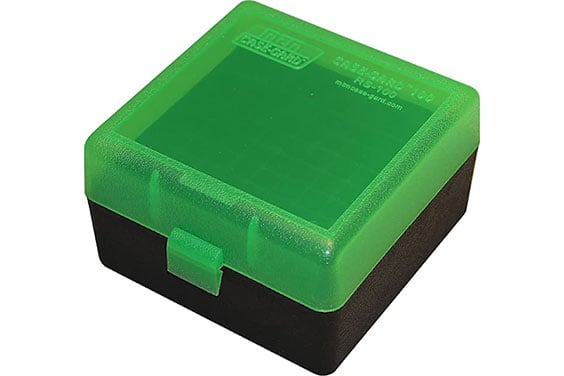
Plastic ammunition storage containers safeguard ammunition with water and dust-resistant compression closures with gaskets; great for outdoor activities like camping and hunting. A plastic ammo box is perfect for confined areas like a garage, closet, or gun case.
The base-to-lid interlocking structure on this plastic stackable ammo can also help to prevent tipping, giving you a safe, small, and thin ammunition container for storage. Ammunition storage facilities for hunting, the range, and other uses must be safe and dry. Because of this, a plastic ammo box is an ideal option for maintaining the integrity of the ammunition in dry, dust- and water-resistant environments.
Camping equipment, a temporary tackle box, a compact ammo toolbox, and other uses for hard plastic ammunition cans are all excellent. Ammunition storage boxes are the best storage solutions because they keep the ammunition safe and secure in a dry, gasket-sealed environment.
Metal Ammo Boxes

Metal ammo boxes are the logical choice if you intend to store the ammunition in a location where it will be destroyed or stolen since they are made to be robust and durable. A metal box guards the ammunition against theft, water damage, dust damage, sunshine damage, and other hazards.
Additionally, metal cans can carry more ammunition than wooden ammo tins, making it simple and orderly to store heavier rounds. Using the latch or keyed locking mechanism in these boxes, you can keep the storage safe and secure.
Ammunition Boxes Wooden
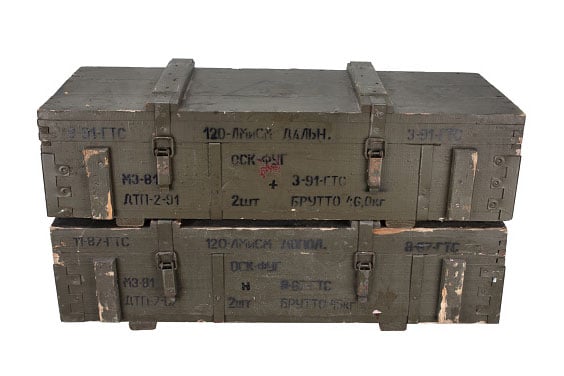
There are many advantages and options to using wooden ammo boxes to store and transport small-caliber ammunition. Since they are often constructed from the best available wood, wooden ammunition boxes can support larger shots.
Those who favor purchasing natural materials will find this material is also more ecologically friendly. There are many uses for wooden ammo boxes, including transporting ammunition in a car and long-term ammunition storage.
For those who need to travel several little rounds, these boxes are a great solution because they are also used for rifle magazines and small-caliber ammunition.
Why Should You Use Box to Store Ammunition?
Most sports goods stores, pawn shops, and online retailers all carry ammunition store boxes since they are strong, long-lasting, perfect for storage, and easily accessible. Boxes used for ammo storage are highly adaptable and have several uses. Along with its intended function as ammunition storage, they may be employed for everything from concealing survival caches and ordinary storage to assisting in home defense.
An ammo storage box is a rigid metal container with a lock and a gasket to keep damp and water out. When closed properly, they may withstand prolonged submersion in the water while maintaining total dryness of the contents.
In all honesty, ammunition can be used to store almost anything, including food, water, first aid supplies, and other items. They will perform a fantastic job of keeping the contents dry and well preserved because they are so effective at keeping moisture out.
Ammo cans are undoubtedly among the most excellent containers for a survival stash you can hide in the wilderness. If you ever need to leave the house, a survival cache is simply a container filled with supplies that you bury in a specific area and may later use to restock yourself. Burying the cache to a bug-out spot is usually a brilliant idea.
If an ammunition can is correctly closed and sealed, it may be buried far into the watery earth while keeping everything within perfectly dry.
Advantages of Ammunition Box
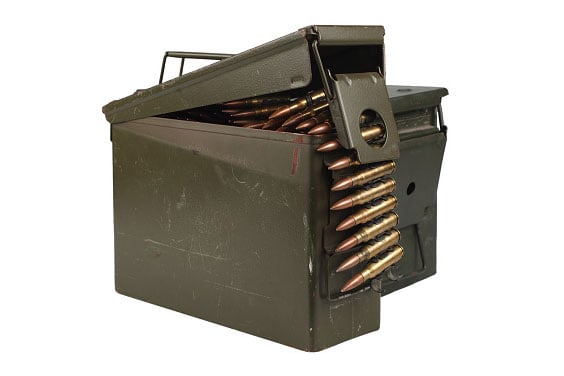
Both inside the house and during military operations, proper ammunition storage is crucial for maintaining safety. Most ammunition, from.22 caliber bullets to GPS-guided missiles have an explosive charge at some point in the design. The charge can be employed as a payload or fuel, but in either instance, incorrect storage might cause it to detonate, harming neighboring structures and equipment.
Systems for storing ammunition must perform several crucial tasks. Because many explosive propellants and charges are ineffective when damp, ammunition must be kept dry. Because many explosive chemicals degrade at low temperatures and can spontaneously ignite at high temperatures, ammunition storage must also be done in a temperature-controlled environment.
Other environmental concerns, such as the rusting of ammunition casings and the movement of storage containers in the case of an earthquake or other calamity, must be considered while storing ammunition.
The ideal storage location for ammunition is often a metal container with an airtight seal. Stabilize the container if it is stacked on the bottom of a stack with heavier containers. Old military ammunition cans, often ammo cans, are sold in many military surplus outlets. These can be loaded with cardboard boxes labeled with the ammunition they contain, piled neatly in a dim space, ideally inside a large safe. This will prevent the theft of a home munitions storage facility.
Military ammunition storage techniques are similar but are carried out on a greater scale. During times of crisis or war, ammunition is frequently manufactured in large quantities. If the ammunition is sold or trashed once the immediate threat has passed, the investment in productive resources utilized to build the ammunition would be squandered. Several countries now keep their ammunition in sizable, well-guarded dumps to prevent illegal removal of ammunition—military bases with restricted access and protected in reinforced bunkers.
The Soviet Union established enormous ammunition storage facilities where equipment and ammunition dating back to the Second World War were maintained in reserve in case of an emergency. Storage of ammunition and other outdated military equipment was quite widespread in the Soviet Union. However, the experience in Iraq in 2003 presents a warning: inadequately guarded ammunition storage facilities can result in public theft of military-grade equipment, which can cause serious public safety issues.
What is Ammunition container used for?
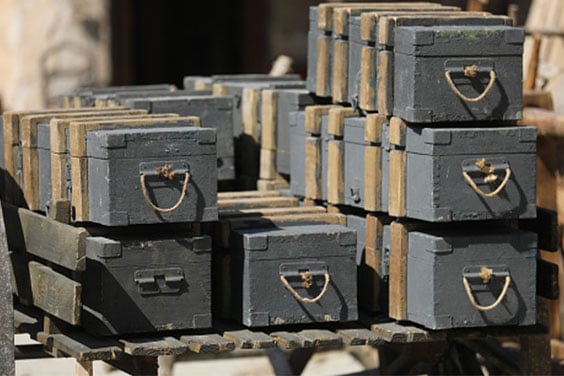
A box intended for the secure transport and storage of ammunition is known as an ammo box. Usually formed of metal, it is marked with the caliber, the quantity, and the year of the manufacturer or lot number. Hinged lids frequently have rubber gaskets to prevent moisture damage to the ammo.
Used metal ammo boxes are frequently recycled for general storage and other uses due to their sturdy design. Geocachers frequently use ammunition boxes as hiding places for logbooks and prizes. Military surplus shops frequently sell used boxes.
To keep the ammunition orderly and stop movement, it is preferable to store it in a box. The brass coating on the ammunition is kept secure and dry in a box to avoid corrosion. Gun and ammunition safety greatly depends on appropriate storage.
How to Properly Store Ammunition
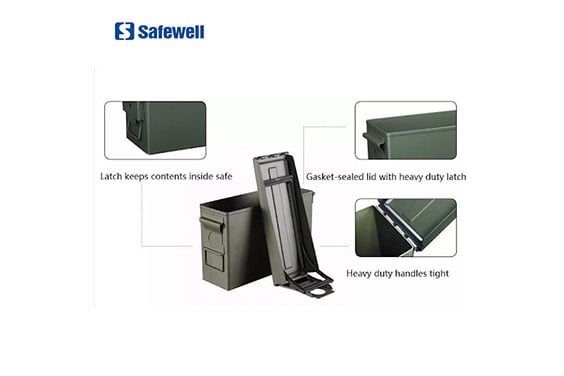
Anywhere that is dark, dry, and cool is the straightforward response. These circumstances provide the finest overall conditions for long-term viability. What does dark, dry, and cold signify, though? Additionally, it’s critical to comprehend the significance of each of these factors because doing so can help you evaluate potential storage solutions.
Naturally, the quantity of ammunition you have will rise if you’re relatively new to gun ownership or have just begun increasing firearms collection. When you and buddies decide to travel to the shooting range or out into the countryside to have a good time, you never know when you might need additional on hand. The last thing you want is to make a quick trip to at the neighborhood gun shop or sporting goods store only to discover that they are out of stock of the kind of ammunition you want.
Keep ammunition in a room that’s dark, dry, and cold
The advice to store ammunition in dark, dry, and cold conditions has long been the norm. In an era of powder, ball, and wad, it is clear why each of the three criteria was crucial. The ammunition was safeguarded against the primary sources of deterioration—humidity, chemical breakdown, and fire or explosion—by being kept in the dark, dry, and cold environment. Even while modern ammunition is far more durable than powder kegs, it can still sustain harm.
The greatest threat to ammunition is unquestionably humidity. Many people mistakenly believe that becoming wet is the only cause of the corrosion, which is made worse by even a tiny amount of moisture. Very little moisture is necessary for failure, especially if it gets within the primer or main cartridge case. Whatever else you do, custom ammo can get damaged if you can’t keep it as dry as possible.
Keep out of the heat
Long-term storage in locations often exposed to intense heat, such as the trunk of the car in the summer, can change the chemical composition of gunpowder, shortening the life of the ammunition. The ammunition may sweat physically in temperatures exceeding 125°F when the nitrocellulose in the gun powder converts to gas and leaks from the casing.
Many newcomers are concerned that hot temperatures would cause ammunition to burn spontaneously. But this is essentially fiction, much like spontaneous combustion itself. These days, ammunition is made to endure rather high temperatures on either end of the temperature spectrum. But exposing the ammunition to intense heat might harm it.
High temperatures will begin to impact the gunpowder and priming combination. As a result of significant deterioration, you’ll gradually notice a decline in performance until the rounds or shells cease shooting entirely.
As a general guideline, ensure the ammo is always kept below 150 degrees Fahrenheit. That’s simple to accomplish if you keep the ammunition locked up in wholesale gun safe, but occasionally you can discover a box 22 caliber bullets in the car’s trunk. The car’s trunk may quickly reach above 172 degrees on a sunny day, which is hot enough to deteriorate any ammunition.
Avoid Temperature Variations
Avoiding very cold temperatures might also influence the ammo, in addition to hot temperatures. Temperature changes are more likely to make the ammunition less effective. A case of ammunition can suffer from temperature variations in the same manner that temperature changes can damage a case of beer.
Unfortunately, this implies that you generally shouldn’t store the shells in a location exposed to the varying seasons, such as the garage. People frequently believe that ammunition is safe as long as it is kept indoors, but this isn’t always the case. Basements, automobiles, and open containers are all the wrong locations to store things because of the potential for large temperature swings.
The lifespan of the ammunition, which may last over 10 years or more if properly maintained, should be kept somewhere with normal temperatures (storage unit, gun safes, gun rack in the house, etc.).
Gun safes are the ideal storage option for ammunition due to their constant temperature and dry interior. They’re helpful if you have kids or teens who you don’t want to have unsupervised access to firearms and ammo. You’ve invested much money in ammo, so treat it right.
Store in a dry environment.
The metal case and bullet can corrode when ammunition is kept in humid conditions. The cartridge might not sit properly in the chamber, for example, as a result. Additionally, it may weaken the cartridge, making it risky to fire the bullet.
Keep the ammunition sealed and off the ground if you reside in a humid climate. Think about keeping the ammo in a space that has a dehumidifier. You can buy dehumidifiers that don’t require a power supply if you’re keeping the ammunition in a safe.
Where to wholesale ammo boxes from reliable manufacturer

To meet the demands of any expert, safes manufanturer – Safewell has developed and manufactured several makes and models of ammunition boxes in bulk. For instance, the screw organizer box is perfect for organizing and protecting the screwdrivers. Alternatively, you might use a socket case, which is great for sockets and other small parts like screws and screwdrivers.
You have a wide range of utensil storage options with Safewell ammunition box. You may choose from various models, sizes, and materials to make it simpler to discover the ideal box for ammon. You may get traditional toolboxes made of plastic or metal, or they are portable and have all the tools you want to be a skilled handyman.
A rolling toolbox is the best option if you frequently need to transport heavy tools. You may carry tools of various sizes on the job, and it’s an easy and practical way to reduce pain and suffering.
You must have bulk ammunition boxes to keep the tools secure and organized. You may keep wholesale sockets, screwdrivers, pliers, wrenches, hammers, and many more tools in ammunition boxes. You always have the tool-carrying case with you when working. Both full and empty cases are available at affordable costs.
FAQs
What happens if ammunition becomes wet?
If the ammunition becomes wet, most of the time, nothing extraordinary won’t happen. The primer and bullet are almost waterproof and will keep water from getting to the powder unless they are broken. Anything that calls itself “waterproof,” which is usually more correctly “water resistant,” has a limit. The seals are likely to be compromised after extended submersion, repeated exposure, or inadequate aftercare after such exposure and may fail when you try to fire them.
While darkness won’t stop a fire, it will delay the early deterioration of package materials and seals. Consider what would happen to a blouse or cap kept in the car for a long time. The material ages, deteriorate, and eventually goes unused. The same is true for weapons. Even though the case seems well-maintained, prolonged exposure to light can weaken seals and harm packing, which is the first step toward ammo that has been tampered with.
Is it preferable to keep ammunition in a box or loose?
To keep the ammunition orderly and stop movement, it is preferable to store it in a box. The brass coating on the ammunition is kept secure and dry in a box to avoid corrosion. Gun and ammunition safety greatly depends on appropriate storage.
Why use a box of ammunition?
Ammunition boxes are most likely the preferred form of ammunition storage. It makes sense since you are not attempting to repurpose anything to suit the requirements, which is precisely what they are intended for.
Metal or plastic ammo boxes are available, and there are two sources to choose from brand-new construction or military surplus. Each has advantages and disadvantages. Although surplus ammo boxes come in different sizes and are frequently a little more robust, they are used.
On the other hand, brand-new commercial cans could be made of inferior materials or plastic, which might break if fully loaded. There have also been reports of these plastic cans breaking down when immersed or exposed to a lot of water. The finest advice is to scrutinize every can and choose just the strongest and best-looking ones.




